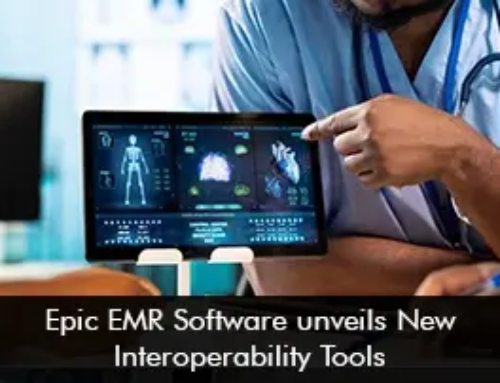Investing in EMR software is a significant decision for any healthcare organization. Beyond the initial implementation, getting the best return on investment (ROI) requires optimizing how the software is used. Let’s explore how healthcare facilities can maximize their ROI with EMR software through effective use and strategic adjustments.
Understanding the Basics of EMR Software
Electronic Medical Records (EMR) software is designed to digitize, organize, and streamline patient data within healthcare systems. While EMR software has become essential, understanding its full potential can turn it from just another tool into a valuable asset for your practice.
Why Maximizing ROI on EMR Software Matters
Every dollar spent on EMR software has the potential to yield significant returns. Properly leveraging the software can lead to improved patient care, streamlined workflows, and cost savings. However, these benefits aren’t automatic; they require thoughtful planning and usage.
Key Strategies to Maximize ROI with EMR Software
Let’s dive into specific strategies to get the best ROI out of your EMR software.
1. Optimize Workflow with Customization
Tailor the Software to Your Practice’s Needs
Most EMR software comes with customizable features. Tailoring these features to match your practice’s needs is essential for smooth workflow. Customizing templates and workflows can ensure faster data entry and more accurate records, saving time and reducing frustration.
Automate Repetitive Tasks
Automation is one of the biggest advantages of EMR software. Tasks such as appointment reminders, prescription renewals, and billing can be automated, allowing staff to focus on more critical tasks. Automation not only saves time but also reduces the risk of errors.
2. Train Your Staff Regularly
Initial Training is Not Enough
Initial training is essential, but ongoing training is even more critical. EMR software updates frequently, adding new features and improvements. Regular training sessions help staff stay updated, enabling them to use the software more effectively.
Empower Your Staff to Be Confident Users
Training builds confidence, which leads to faster data entry, fewer errors, and better patient interactions. Make sure staff have access to resources that help them get comfortable with the software. Engaged and well-trained staff can use EMR software to its full potential, directly impacting ROI.
3. Enhance Patient Engagement
Use Patient Portals for Better Communication
Many EMR software solutions include patient portals, allowing patients to view their records, schedule appointments, and communicate with providers. Encouraging patients to use these portals can enhance engagement, reduce call volume, and improve satisfaction.
Enable Secure Messaging and Follow-Up Options
Secure messaging can improve patient communication and enable more efficient follow-ups. This feature allows patients to communicate with their healthcare providers directly and get prompt answers to their questions. Enhanced patient engagement through EMR software can lead to better care outcomes and higher retention rates, directly impacting revenue.
4. Utilize Data Analytics to Inform Decisions
Leverage Built-In Reporting Tools
Most EMR software includes reporting tools that can help practices track key performance indicators (KPIs) like appointment volume, revenue cycles, and patient demographics. Regularly reviewing these reports can highlight areas for improvement, helping administrators make data-driven decisions.
Use Analytics for Predictive Insights
Data analytics can go beyond just showing past performance. Predictive analytics, which some EMR software may offer, helps healthcare providers anticipate patient needs. For example, analyzing trends can help in predicting which patients may need follow-ups or additional support.
5. Integrate EMR Software with Other Systems
Connect EMR with Billing and Practice Management Systems
Integrating EMR software with other essential systems like billing and practice management can streamline processes and reduce data duplication. Seamless integration ensures that all aspects of patient care and business operations work together smoothly, cutting down on time-consuming tasks.
Enable Smooth Data Sharing Across Healthcare Providers
If your EMR software can be integrated with other healthcare providers or labs, it becomes easier to share and access patient information. This interconnectedness improves patient care and allows for faster decision-making.
6. Ensure Data Security and Compliance
Prioritize Compliance with Healthcare Regulations
Healthcare organizations must prioritize compliance with regulations like HIPAA in the U.S. or GDPR in Europe. EMR software that adheres to these regulations ensures patient data security and minimizes the risk of costly violations.
Regular Security Audits
Security audits ensure that your EMR software is consistently secure. Regular audits identify potential vulnerabilities, allowing for proactive measures. Protecting patient data is essential not only for patient trust but also for avoiding hefty fines associated with data breaches.
Key Benefits of EMR Software for ROI
Now that we’ve reviewed strategies, let’s look at how these tactics benefit your ROI.
Enhanced Operational Efficiency
Implementing the right customization, training, and integration strategies can significantly streamline workflows. This allows staff to work more efficiently and minimizes time spent on redundant tasks, leading to lower operating costs and a better bottom line.
Improved Patient Outcomes
Enhanced patient engagement and predictive insights can lead to improved patient outcomes. Healthier, happier patients are more likely to return and recommend the practice to others, directly benefiting revenue growth.
Reduced Overhead Costs
Automation and integration reduce the need for paper-based processes and manual data entry, cutting down on overhead costs. A fully digital, interconnected system can lower expenses associated with administrative tasks.
Increased Revenue
Efficient billing, better patient engagement, and data-driven decisions all contribute to increased revenue. A more streamlined process reduces the chance of missed revenue opportunities and increases the likelihood of capturing payments accurately.
Overcoming Challenges with EMR Software
While EMR software offers numerous benefits, it also presents challenges. Being aware of these and proactively addressing them can further maximize ROI.
Initial Cost of Implementation
The cost of EMR software and its implementation can be high. However, planning for a phased rollout and considering cloud-based options can help reduce initial expenses. Cloud-based EMR solutions often have lower upfront costs and provide flexibility for future scalability.
Potential Resistance to Change
Staff may be resistant to adopting new software. Address this by emphasizing the benefits, providing thorough training, and ensuring ongoing support. Change can be challenging, but the right approach can make the transition smooth and rewarding.
Managing System Downtime
System downtime can disrupt operations and affect ROI. Regular maintenance, robust technical support, and a reliable software provider are essential for minimizing downtime and ensuring uninterrupted access to patient data.








